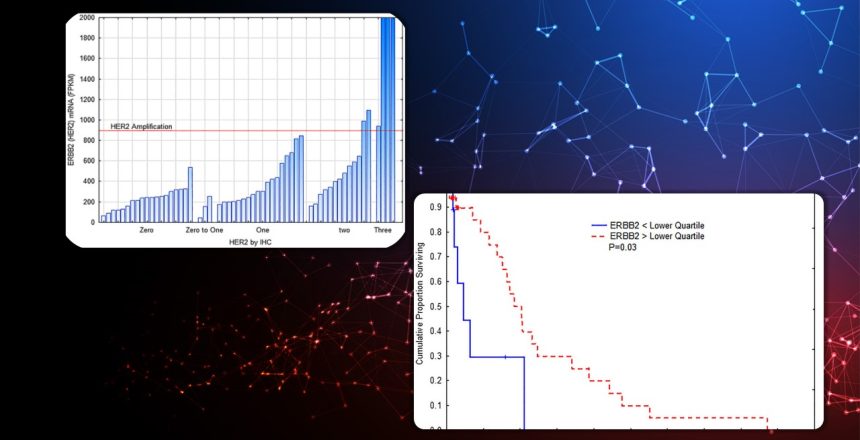Maher AlbitarMD, Andre GoyMD, Andrew PecoraMD, Deena GrahamMD, Donna McNamaraMD, Ahmad CharifaMD, Andrew IPMD, Wanlong Ma MS, StanleyWaintraubMD
Abstract
HER2 and hormone receptors are biomarkers for selecting breast cancer therapy and predicting outcomes. In the era of antibody-drug conjugates (ADC), a relatively low HER2 expression level is adequate for targeting tumor cells. We explored the potential of RNA profiling, determined by next-generation sequencing (NGS), to provide more flexible clinical biomarkers as compared with immunohistochemistry (IHC) or fluorescent in situ hybridization (FISH). Data from 57 breast cancers was used to study biomarker levels as detected by routine clinical transcriptomic tests. HER2 (ERBB2), estrogen receptor alpha (ESR1), and androgen receptor (AR) mRNA levels were compared with IHCand FISH results. There was a significant overlap in the levels of ERBB2 mRNAbetween cases scored by IHCas zero, 1+, and2+. This variation correlated with progression-free survival (PFS). Similarly, the ESR1 RNA accurately reflected estrogen receptor (ER) status. Patients with high AR mRNA had better PFS (p = 0.05). Patients expressing high ER and AR levels had better PFS than those expressing low ESR1 and AR (p = 0.03). These findings suggest that RNA analysis can be an alternative to IHC and FISH and provides continuous data that can better determine cut-off points for predicting response to ADC.
KEYWORDS
androgen receptor, breast cancer, ERBB2, estrogen receptor, HER2, next generation sequencing, progression-free survival


